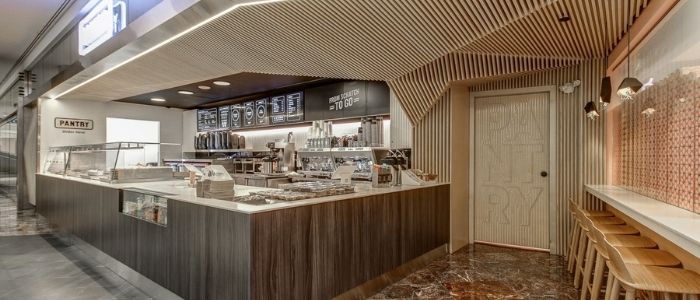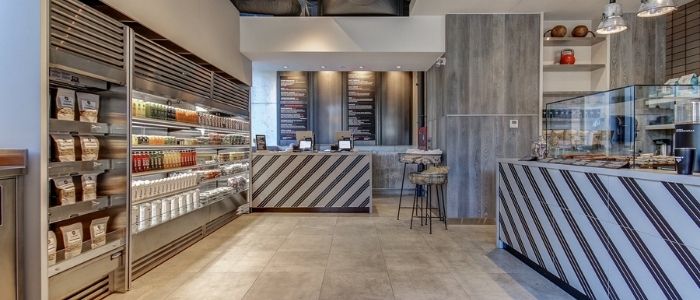Commercial environments are planned, assembled, and finalized by interior designers with trained experience developing workspaces that align with commercial office needs.
Interior designers aim to design spaces that are practical and aesthetically pleasing for the teams that will occupy the spaces. Their responsibilities can be broad in scope […]
ranging from site inspections to negotiating with suppliers and commercial contractors.
One question that comes to mind is how much can interior designers influence the construction of a commercial project? Can an interior designer hire and choose commercial subcontractors and change the development parameters of a particular project?
Read on for a detailed answer to the question.

What is an interior contractor vs. an interior designer
An interior renovation contractor is someone who secures materials and equipment to complete the construction or renovation of a particular job. They can also hire subcontractors with specialized skills in certain aspects of the construction project to help streamline the process. An interior designer is someone with in-depth knowledge and experience in maximizing the usability of commercial office spaces. Interior designers have the ability to envision a completed commercial space before construction or renovation begins. They provide the roadmap for how best to use the available space. Furthermore, they guide the construction work that needs to be done. However, interior designers delegate the hiring of any subcontractors to the primary contractor.
Do interior designers need a contractor’s license
It’s not exactly a hard yes or no. In Canada, the requirements to become an interior designer vary by province. Most importantly, some provinces require interior designers to be fully licensed and certified to practise their professions. However, it’s not a requirement in all provinces, so check with the regulations for building and construction in your province to verify if you need someone with a license or not.
Often, there’s a misunderstanding between the credentials that are necessary to be an interior designer and an interior decorator. While most states do require interior designers to be certified, interior decorators commonly conduct their businesses without formal credentials.
When hiring an interior designer for a job, ensure that you don’t mistakenly interview interior decorators as candidates. You’ll want an experienced interior designer that’s either fully certified or with a proven reputation supported by testimonials from many happy clients.
How do interior designers work with contractors
One thing that most interior designers and general contractors agree on is this: overseeing an entire construction project, especially a commercial construction project, is hard work.
These large-scale projects require multiple stakeholders to execute as smoothly as possible. The interior designer and the contractor must work together to envision the best use of the available space. Morevoer, develop it into an environment that tenants can come to every day.
New York-based designer Nicole Fuller has years of experience developing unique, uber-luxe commercial spaces, and has a checklist for how interior designers and contractors can work together. She encourages all collaborative members of a construction team to do 3 things:
- Hire the best people who believe in teamwork; no “i” in team
- Set the right expectations and arrange realistic deadlines to manage them appropriately
- Check and recheck all the little details to ensure the office space lives up to code.

Do interior designers manage construction
Interior designers’ roles in any commercial construction project can vary depending on the scope of the project and the expectations from the client. However, it’s not uncommon for an interior designer to oversee both the architectural design and the construction work implemented by the crews hired for the job.
Those requirements are most common for interior designers who are also project managers. As project managers, it’s on their shoulders to ensure that the project runs smoothly. Moreover, that it remains on budget and meets – or beats – all of the anticipated deadlines. This person may have a commercial construction checklist to ensure all of the requirements for the project are laid out and followed.
What are the benefits of integrated design
An integrated design process is a collaborative effort between interior designers, contractors, and all relevant stakeholders in a commercial construction project. All parties align on the responsibilities, objectives, and key deadlines for a particular project from the onset to utilize time, budget, and resources more effectively.
A comparison and contrast between the integrated design process and the conventional design process in a regarded publication on ResearchGate illustrates how the two processes are both similar and different. The key benefit to the integrated design process is that it allows collaboration between all stakeholders. Additionally, this collaboration occurs from the very beginning to the very end of a commercial construction project.
As outlined in the report, the main benefits of the integrated design process are that changes to the commercial office space can be agreed upon and implemented in the early design phase of the project. Changes required in a conventional design process typically occur much later. This can be far more costly and time consuming for the entire team.
It’s far less expensive and time consuming to make those changes earlier than later in the process. The integrated design process also promotes greater transparency with the client. It ensures any necessary changes receive the blessing of the client without costly work having to be redone or dismantled.
Use BUILD IT for full service general contracting services
Since interior designers must work collaboratively with general contractors, especially in an integrated design process, it’s best for you as the building owner or manager to save time on your own schedule by overseeing this collaboration in as hands-off an approach as possible.
That’s where a partnership with a company like BUILD IT makes all the difference. We’re a turnkey design build contractor & construction service provider that unifies the entire integrated design process, allowing you to arrive at your big vision through a single point of contact.
Ours is a streamlined project delivery model that unites all stakeholders in a commercial construction project under one contract. The entire team is responsible for the shared vision and works collaboratively to achieve all the key deadlines on budget. Also, we work with a high-quality commitment to the deliverables.